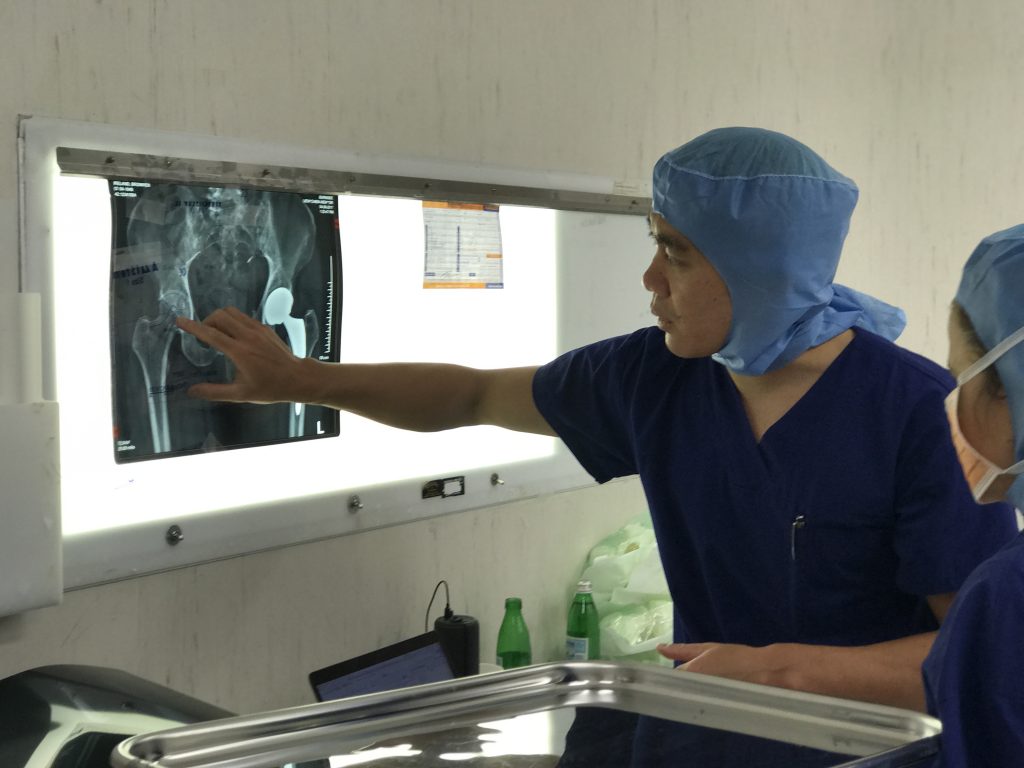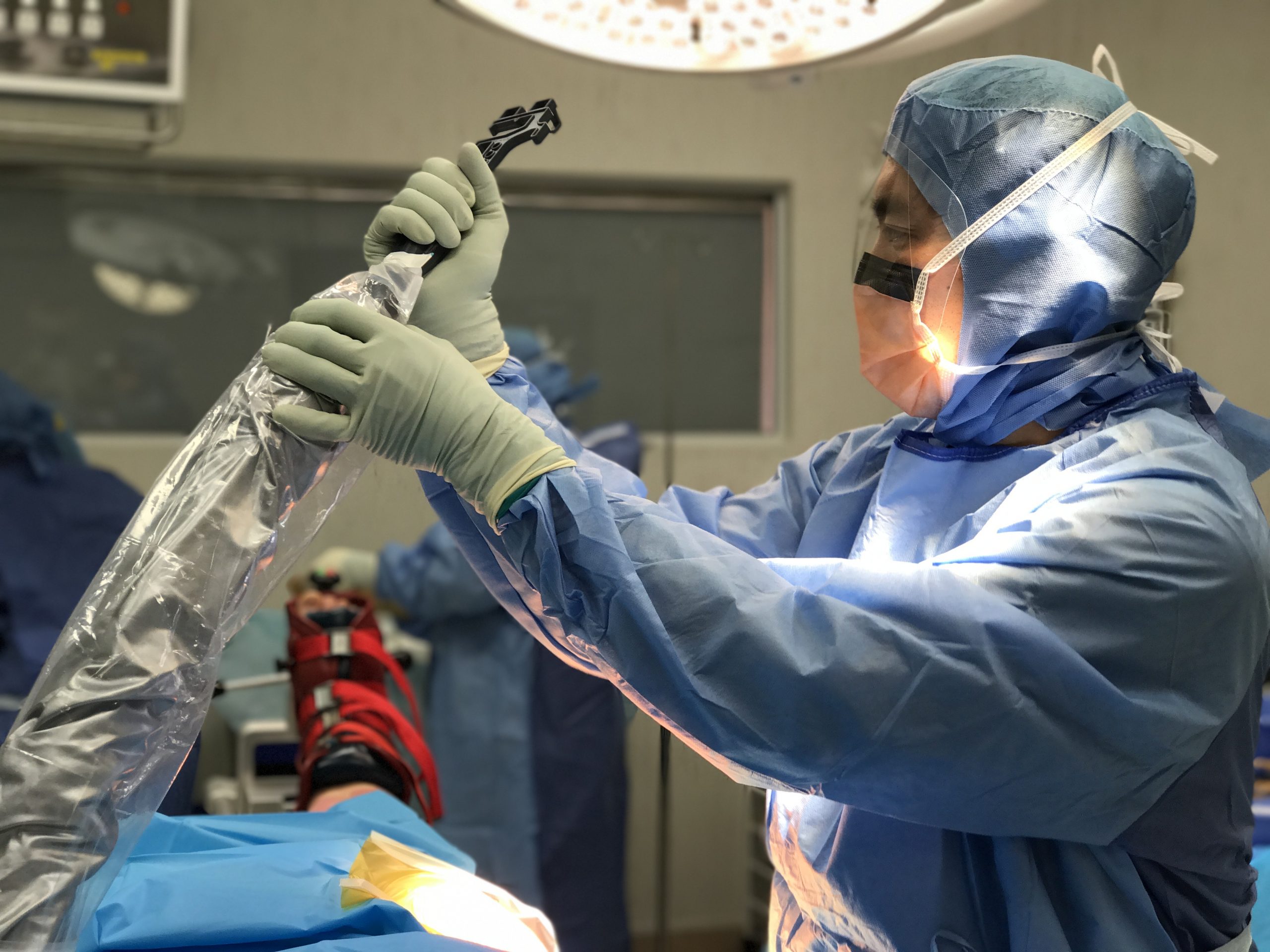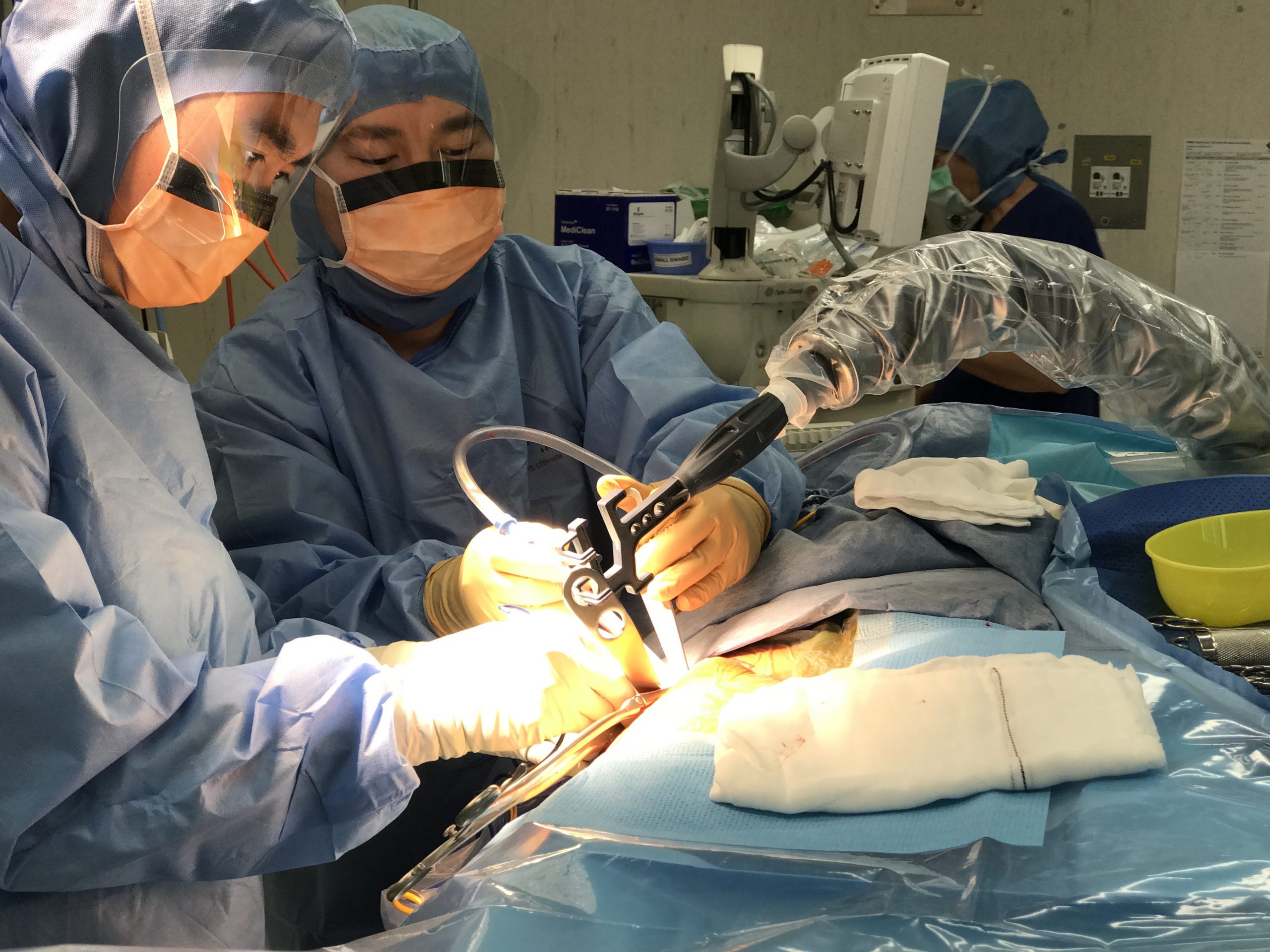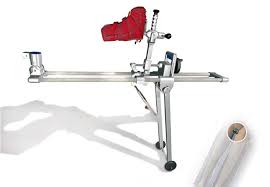Technology and Innovation – what I use now
Technology has always been one of the most exciting parts of what we do everyday. What has become standard practice now was pie in the sky thoughts 10-15 years ago. With the ever improving landscape of orthopaedics, it has been a privilege to work with some of the worlds best innovators, surgeons, mentors and colleagues in seeing, trialing, using or producing some of the very best tools we have available. This article aims to highlight a few of those innovations that are utilised each and every day we perform surgery.

HIP REPLACEMENTS


Pre-operative planning is critical to the success of the surgery. We go through many forms of pre-operative planning including:
- 3 Dimensional scanning used for pre-operative assessment and planning of each and every hip. This is then used to produce the patient specific guides utilised for each surgery. This technology enables the ability to know the exact shape of prosthesis, size and position of the final implant, long before the surgery is performed.
- Xray assessment – as a final check before the surgery, templates are used to match the 3 Dimensional plan to a 2 Dimensional image.
- During surgery, an Intraoperative scan is performed to match the trial to the plan. Any minor alterations can be performed prior the final implantation, ensuring that the best position is achieved prior to closure of the wound.


Pneumatic assistance and a specifically designed table
During surgery, a pneumatic arm called “Gaston” is used to help hold instruments, thereby freeing the hands of our doctor assistant during the surgery. This decreases the handling of instruments directly, and combined with a table specifically designed for the Direct Anterior Approach for Total Hip Replacement surgery, only a small part of the body is touched and handled during surgery. The aim here is to decrease the risk of introducing infection into the system, during surgery by minimising the area handled.
Other technologies used
During a hip replacement a specific device called an Acquamantys is used which is unlike standard coagulation devices. There is water cooling through the device, meaning that small bleeders can be stopped without the usual damaging effects of cauterisation. The fluid cools the tissue, whilst the bleeders are stopped.
Direct Anterior Approach Table
The table used to perform the direct anterior approach is specifically designed to aid all the parts of the surgery. It is used to decrease handling of tissue outside theoperative field, but also to help position the body in a neutral position for surgery. This means that there is very little strain on other parts of the body. It is composed of carbon fibre which enables our intra-operative scan to be performed, without obstruction from metallic objects. The table is used for every single operation performed using the direct anterior approach and has undergone many improvements over time. The first table ever constructed for this procedure was made over 30 years ago.

Custom Made Instruments
Specifically designed retractors have been created over time, enabling minimisation of tissue damage during surgery. The instrument used here is used specifically for Bikini Incision Direct Anterior Approach Total Hip Replacement operations, and was designed in conjunction with a medical engineering department for this one purpose.

KNEE REPLACEMENTS

Patient Specific Technology
A 3 dimensional scan is performed of the knee prior to surgery. Custom made cutting jigs are produced which enable the planned cuts to be performed with precision. These jigs are extremely important in ensuring that the pre-operative plan is achieved. During surgery, each cut is checked and verified with a secondary method to ensure accuracy every step of the way.

Total Knee Replacements are performed in a very exacting and specific way. The philosophy used is called Kinematic Alignment. The goal of this surgery is the match the alignment of the final implant with the pre-arthritic alignment. Many people walk around with bow legs, knock knees, duck feet or pigeon toes – the individuality of each person is endless. Kinematic alignment aims to replicate your own anatomy, instead of trying to create an alternative alignment. The alternative method is to try to get each persons leg to be perfectly straight – this is not kinematic alignment. With kinematic alignment, the procedure is a resurfacing procedure of the knee. Therefore, traditional ligament releases, capsular, or tendon releases are not required, as the native resting tension of the ligaments are left intact.

Single Use Instrumentation
Surgery used to be performed with many trays of tools which are resterilised for each case. The cutting blocks, and instruments would wear down over time. Each instrument would need to be disassembled, and manually cleaned before placing them into a steriliser. They items would then be reassembled just prior to surgery. Although all surgeries require some instruments to be used over and over again (such as retractors and forceps), in this technique, as many of the instruments that can be single use, are used. Each kit is created for each operation, and is used only once. This means that cutting blocks are perfectly smooth, and instruments are new for each and every case. This also decreases the theoretical risk of poor cleaning/sterilisation which may result in infections. This is used for each and every total knee replacement that we perform.
Where to from here?
There are so many parts of the surgical procedure that are used for each case, but above are some of the ones that are a bit more unique. They enable accurate surgery to be performed, and followed to a precise nature, of what the surgeon is trying to create. Ultimately, surgeons will only utilise instruments and tools that they are comfortable with in achieving the desired result. I am extremely proud of the devices that we use every day, their technological advancement and the innovation that is used to create them. Surgery is such an exciting field to be in, and the safe implementation of techniques is one of the strengths of our practice. For more information, visit us at:
